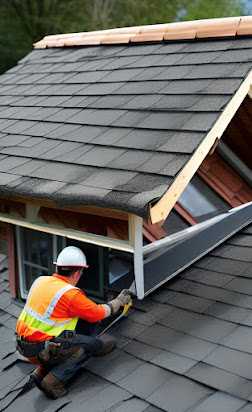Roof Inspections: Ensuring Safety and Longevity for Your Home
Your home's roof is its first line of defense against the elements, safeguarding you and your loved ones from rain, wind, and other external forces. However, over time, even the sturdiest roofs can develop issues that compromise their integrity and effectiveness. This is where roof inspections play a crucial role in maintaining the safety and longevity of your home. In this blog, we will explore the importance of regular roof inspections, their benefits, and provide some tips for conducting thorough assessments.
Why are Roof Inspections Important?
Roof inspections are an essential part of proactive home maintenance. They allow homeowners to identify potential problems before they escalate into costly repairs or compromise the safety of the occupants. Here are some key reasons why roof inspections are crucial:
1. Early Detection of Issues: Regular inspections help identify minor issues such as cracked shingles, loose flashing, or damaged gutters before they worsen and lead to significant leaks or structural damage.
2. Prolonging Roof Lifespan: Timely identification and resolution of minor problems can extend the lifespan of your roof. A well-maintained roof will have a better chance of withstanding the elements and lasting for its intended lifespan.
3. Cost Savings: Addressing minor repairs early on is more cost-effective than waiting until significant damage occurs. By investing in routine inspections, you can save money in the long run by avoiding costly repairs or premature roof replacement.
4. Insurance Requirements: Some insurance policies may require regular roof inspections to maintain coverage. By staying proactive with inspections, you can ensure compliance with your insurance provider's terms and conditions.
The Roof Inspection Process:
While it is recommended to hire a professional roofing contractor for thorough inspections, homeowners can perform visual checks periodically. Here are some steps involved in the roof inspection process:
Exterior Assessment:
a. Check for any signs of sagging, unevenness, or dips in the roofline.
b. Inspect the shingles for curling, cracking, missing pieces, or excessive granule loss.
c. Examine the flashing around chimneys, vents, and skylights for signs of damage or deterioration.
d. Assess the condition of gutters, downspouts, and drainage systems.
Interior Inspection:
a. Look for water stains, discoloration, or peeling paint on the ceilings and walls, as these indicate possible leaks.
b. Check the attic for signs of moisture, mold growth, or daylight penetration through the roof.
Professional Inspection:
a. Engage a licensed roofing professional to perform a comprehensive inspection, especially if you notice any significant issues or if your roof is reaching its recommended lifespan.
b. Professionals have the expertise and equipment to identify hidden problems and provide detailed reports.
Roof inspections are a vital aspect of responsible homeownership. By conducting regular inspections, you can catch minor issues before they escalate, prolong the lifespan of your roof, and save yourself from costly repairs or replacements down the line. Remember, safety should always be a priority, so if you're unsure or uncomfortable with conducting the inspection yourself, it's best to seek the assistance of a qualified roofing professional. Take proactive steps today to ensure the longevity and protection of your home's roof.




Comments
Post a Comment